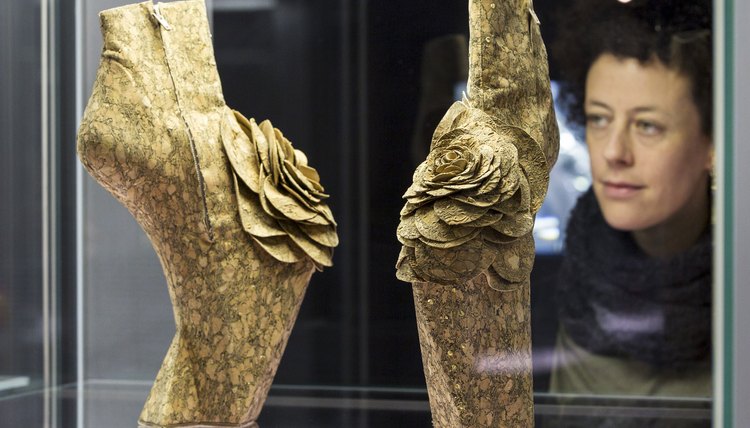How Do Heelless High Heels Work?

In heel-less shoes, the balls of the wearer's feet rest on high platforms while the heels appear to hover, seemingly unsupported, in thin air. These shoes have existed since the 1930s, but only became popular more recently, after entertainer Lady Gaga made the shoes of Japanese designer Noritaka Tatehana a regular part of her eccentric ensembles. Today, many designers offer heel-less high heels to varying degrees of cost and quality.
Development of the Heel-less High Heel
Cantilever shoes were first introduced in the 1920s by the Morse and Burt company. While these shoes had heels, their design transferred much of the wearer's weight to the front of her foot. This reduced stress on her ankles and heels. In the 1930s, designer André Perugi introduced the truly heel-less high heel. While he failed to achieve widespread success with his design, he set a standard that persists in modern heel-less high heels.
How Cantilevers Work

Graham Denholm/Getty Images Entertainment/Getty Images
A cantilever is a horizontal beam, attached to an anchor or support at one end, which floats freely at the other end. The load of an object, resting on the free end of the beam, is transferred to the support end where it is born by the anchoring object. Through this balancing act, heavy loads can be made to rest safely on much lighter beams, and may extend safely away from their support.
Cantilevers in Heel-less High Heels

Graham Denholm/Getty Images Entertainment/Getty Images
In heel-less high heels, the cantilever takes the form of a strong steel shank under the sole, angled upward and away from a broad, heavy platform that serves as the support. The ball of the wearer's foot rests on the support. The angle of the shank directs the wearer's feet to position her body in a way that balances her load over the supports below. Broader, heavier supports allow more horizontal angles than narrower supports.
Heel-less High Heels and Joint Health
Heel-less high heels may circumvent some of the risks associated with traditional high heels, which arise from using both the heel and ball of the foot at unnatural angles, but other concerns may remain. Platform shoes can stress the ball of the foot and big toe joint, and any poorly designed shoe can have lasting detriments to your health. If you notice persistent pain after wearing heels, consult your doctor for advice on healthier alternatives.
References
Writer Bio
Rob Callahan lives in Minneapolis, where he covers style, culture and the arts for Vita.MN and "l'étoile Magazine." His work has earned awards in the fields of journalism, social media and the arts. Callahan graduated from Saint Cloud State University in 2001 with a Bachelor's degree in philosophy.
